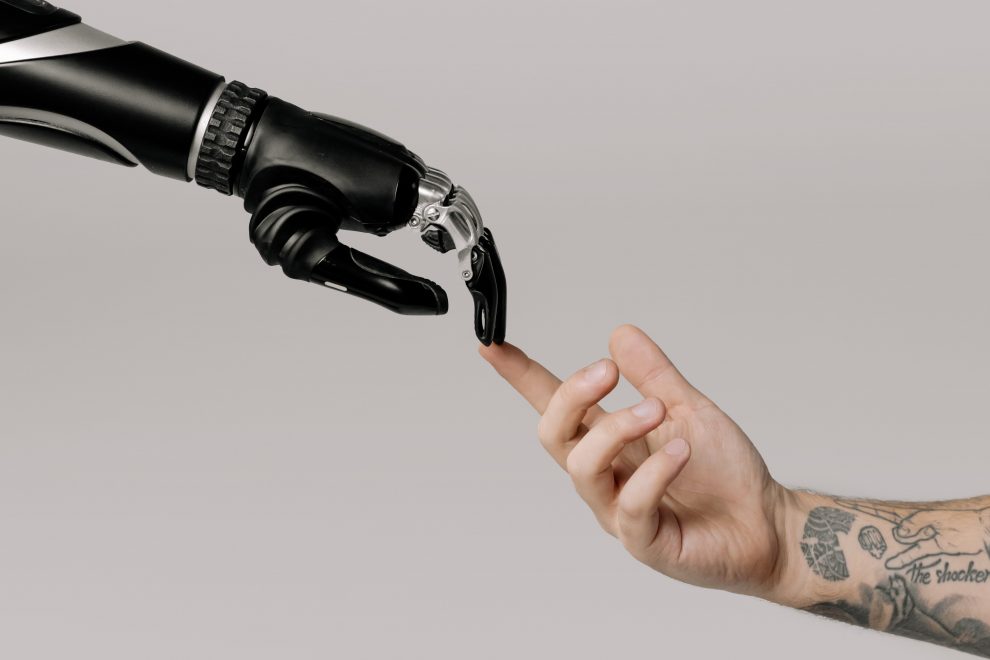Introduction
AI and ML stand as two of the most transformative technologies in our era, exerting a substantial influence across various industries, including mobile app development. These technologies significantly impact mobile apps, granting them intelligence, personalization, efficiency, security, creativity, and accessibility. They drive an array of features, such as personalization, predictive analytics, automation, security reinforcement, enhanced creativity, and improved accessibility.
The manifold advantages of integrating AI and ML into React Native app development become apparent. As developers infuse AI and ML into their apps, they can forge experiences that are not only more personalised and also engaging but also more secure.
How AI and ML are used in React Native Apps
Companies and developers integrate AI (Artificial Intelligence) and ML (Machine Learning) into React Native apps for augmenting user experiences and delivering intelligent functionalities. This also includes :
Image recognition:
AI and ML can be used to recognize images in React Native apps. This versatile technology serves multiple purposes, seamlessly identifying objects, detecting faces, and classifying images in various applications.Natural language processing:
Within React Native applications, developers can leverage AI and ML to manage natural language processing. This enables a range of functionalities, including understanding user queries, generating textual content, and translating languages.Speech recognition:
AI and ML can play a pivotal role in recognizing speech within React Native apps. They also provide a wide array of versatile applications, facilitating tasks such as transcribing audio, managing voice-controlled apps, and enhancing hands-free feature accessibility. Moreover, these technologies enhance efficiency and furthermore cultivate innovation across a diverse range of functions.Machine learning:
Incorporating AI and ML into React Native apps enables crafting machine learning models for multiple functions, like predicting user behavior, suggesting products, or enhancing app performance.
Here are some specific examples of how AI and ML are being used in React Native apps:
The Google Translate app:
uses AI and ML to translate text between languages.The Amazon Recognition app:
uses AI and ML to detect objects and faces in images.The Facebook Messenger app:
uses AI and ML to power features like chatbots and automatic translation.The Uber app:
uses AI and ML to predict demand and optimize routes.The Spotify app:
uses AI and ML to recommend music and create personalized playlists.
Why AI and ML are used in React Native Apps
AI and ML are used in React Native apps to enhance user experiences and provide personalized content and functionality through features like recommendation systems, predictive analytics, natural language processing, image recognition, and more. This integration enables apps to learn from user behaviors and data, making them smarter and also more responsive over time.
The Google Translate app:
uses AI and ML to translate text between languages. Also utilizing a neural machine translation model, the app proficiently translates text between languages. Trained on an extensive text corpus, the model comprehends language nuances, furthermore ensuring precise translations.The Amazon Rekognition app:
uses AI and ML to detect objects and faces in images. The app uses a deep learning model to identify objects and faces in images. The model is trained on a large dataset of images, and then it is able to learn the features of different objects and faces.The Facebook Messenger app:
uses AI and ML to power features like chatbots and automatic translation. The app uses a natural language processing model to understand user queries and to generate responses. The model is trained on a large dataset of text data, and it is able to learn the nuances of human language.The Uber app:
uses AI and ML to predict demand and optimize routes. The app uses a machine learning model to predict the demand for rides in different areas. The model has been trained on historical data and is capable of learning the patterns of demand. This app uses machine learning to optimize routes for drivers. The model has been trained on data regarding traffic conditions, enabling it to identify the most efficient routes for drivers.The Spotify app:
uses AI and ML to recommend music and create personalized playlists. The app uses a collaborative filtering model to recommend music to users. The model has been trained using data regarding users listening habits, enabling it to learn the preferences of various users. This app uses AI to create personalized playlists for users. further, the system creates playlists based on the user’s listening history and updates them regularly.
The Future of AI and ML in React Native App Development
The integration of AI and ML is poised to reshape the landscape of React Native app development, profoundly evolving its future. This convergence promises personalized, secure, innovative apps and also catering to user preferences. One company that has embraced this transformative trend is GeekyAnts. Also GeekyAnts pioneers React Native app development, demonstrating the power of AI and ML in crafting remarkable solutions. Their success stories exemplify the potential of these technologies to bring about meaningful change. Expect personalized recommendations, real-time feedback, AR enhancements, even self-driving cars within apps. AI/ML tools’ accessibility grows, fostering adoption in React Native. Demand for immersive experiences drives developers to embrace AI/ML. The future holds revolutionary user interactions, propelling innovative developers and expanding app possibilities. AI/ML maturing will push React Native into uncharted creative and functional territories.
Also read: Best Mobile App Analytics Tools for react native- US guide
Conclusion
The fusion of AI and Machine Learning with React Native app development has reshaped the landscape of mobile applications in the USA. From personalization and predictive analytics to enhanced security and also user engagement, these technologies offer a plethora of benefits that are reshaping how developers approach app creation. Continuously evolving, AI and ML empower React Native developers in the USA to unveil increasingly innovative and impactful solutions, addressing the burgeoning demands of the mobile app market with greater precision.
FAQs
How does AI enhance the user interface (UI) and user experience (UX) of React Native apps?
AI can analyze user interactions and preferences to provide a more intuitive UI/UX. It enables features like voice commands, gesture recognition, and dynamic content recommendations, making the app more user-friendly and engaging.
Are there any challenges in integrating AI into React Native apps in the USA?
Integrating AI into React Native apps can present challenges such as finding skilled AI developers, managing large datasets, and ensuring data privacy. Additionally, optimizing AI algorithms for mobile platforms can be resource-intensive.
Can Machine Learning improve user engagement in React Native apps?
Yes, Machine Learning can analyze user preferences and behaviors to suggest relevant content, products, or features, thereby increasing user engagement and retention. This personalization creates a more tailored experience for users.
How does AI benefit React Native app development in the USA?
AI enables apps to learn from user behavior, enabling them to deliver personalized content and features. It can automate tasks like data processing, improve search functionalities, and enhance security through anomaly detection, creating more efficient and secure apps.

























